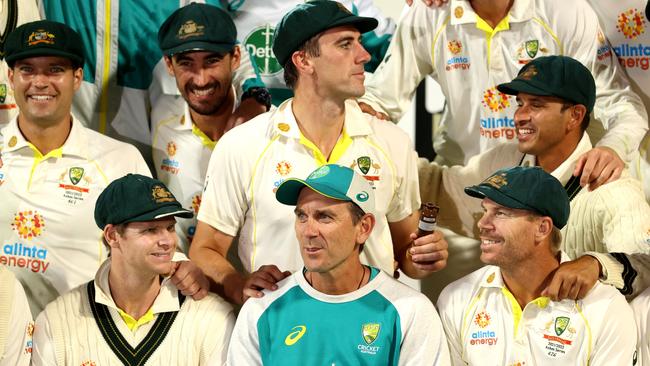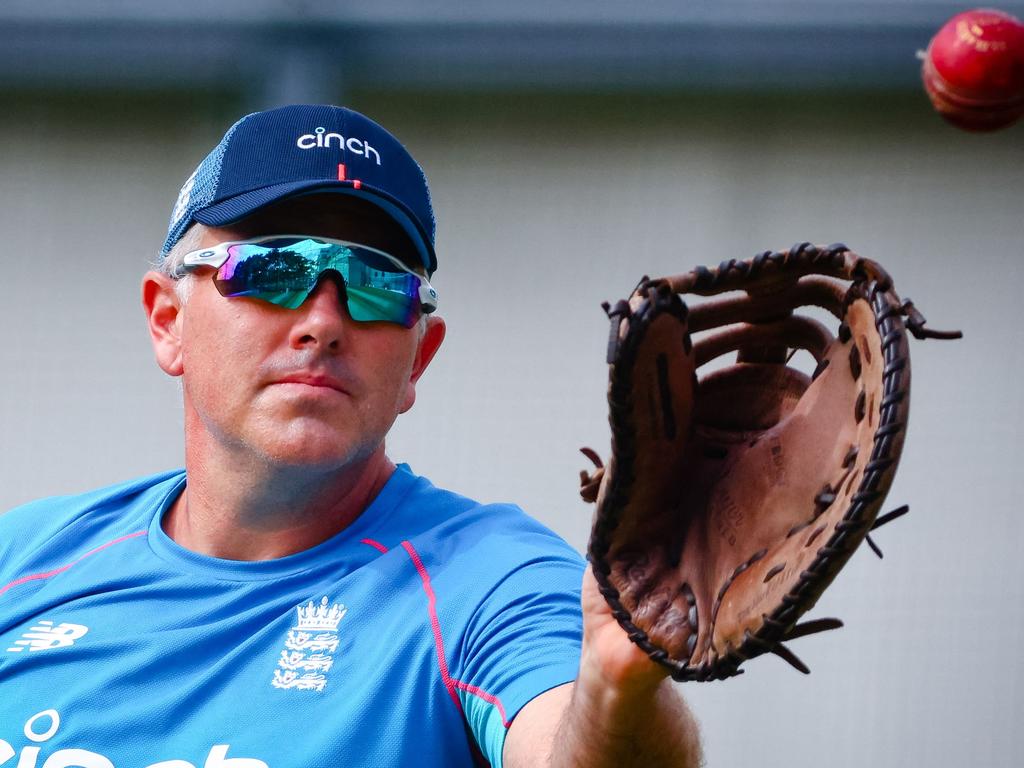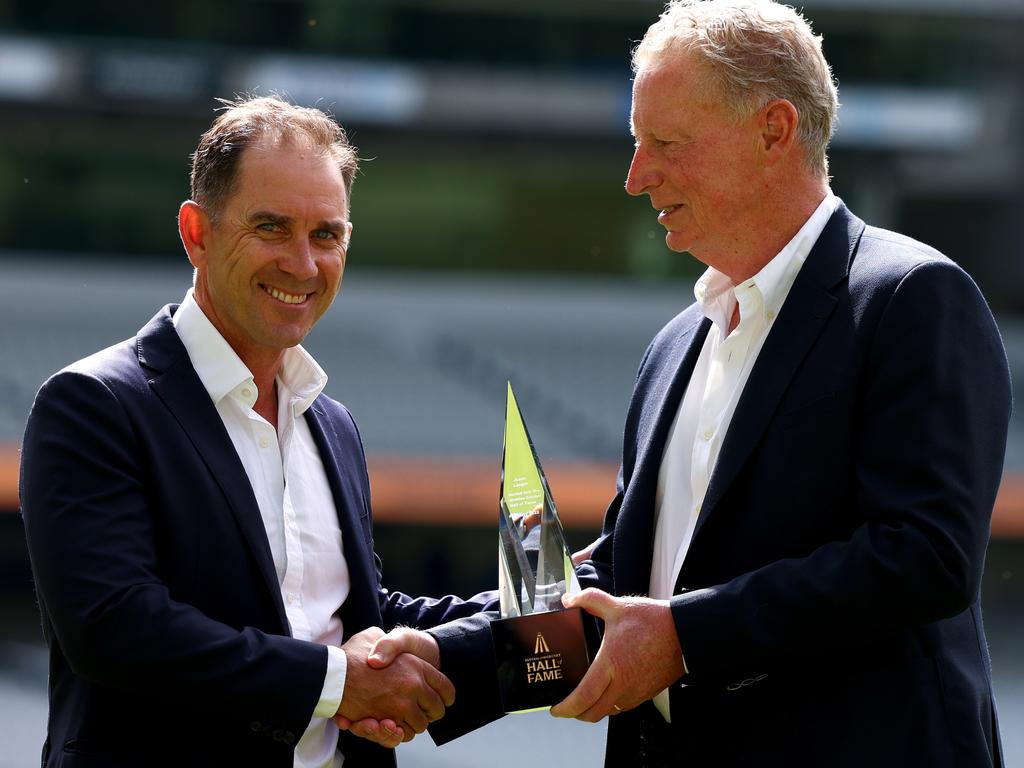Cricket Australia has not backed its coach nor listened to players

It doesn’t apply exactly to Justin Langer’s unsettled relations with the Australian cricket team + nobody could hate this most likeable of men.
It is true, however, that his players harbour a range of attitudes to him, which at the end of a pressured summer, and with more intense cricket in the offing, has brought matters to a head.
By now, everyone has a view about Langer’s entitlement to a new contract as Australia’s head coach. He has loyal backers, who point to the team’s recent record; he has noisy detractors, who cite his equivocal support among the current playing group, including captain Pat Cummins.
Langer’s too intense! The players have too much power! There are generational and interstate differences, public and private ones.
Fortunately, in time of trouble, we can generally agree on one thing, that Cricket Australia can be relied upon to be doing a terrible job. Needless to say, they have not let us down in this respect — we’ll get to that.
But it would help to take some of the emotion out, I suspect, if we thought in terms of a no-fault divorce — the principle in the Family Law Act allowing for the dissolution of a marriage without a showing of wrongdoing.
Neither Langer nor the players seem to have done much wrong here; they’ve merely been themselves. Much about Langer’s coaching, I think, can be understood by reference to how it began — the fact that he picked his clipboard up having barely taken his helmet off.
Langer was appointed Australia’s batting coach under Tim Neilsen in November 2009, not six weeks after his last first-class game, returning to coach many players with whom he had played.
It was no secret he coveted the position of head coach; in some ways, it was the nearest substitute for playing, about which Langer was so magnificently passionate.
When Neilsen went under the Argus bus, however, Langer was overlooked in favour of Mickey Arthur, and instead stepped into managing Western Australia, where he is a sporting divinity, and the Scorchers, where he fleshed out those coaching credentials he finally presented in May 2018.
Langer, then, is one who has dedicated his single mind and great abilities to getting to the top of whatever he’s set himself to. He is also a coach who identifies strongly with his players, almost as though he is out there still.
Why is this important? Partly because Langer waited a long time to be coach and regards it as such an honour, he always aspired to holding the job for a long period. After all, he is still only 51.
And after it, what? There exists in Australian cricket no position of comparable prestige or remuneration.
In the instancy of the transition from playing to coaching, too, perhaps some of the differences between the two remained not quite reconciled in his mind.
A coach does not get the same instant feedback on performance as a player; a coach does not have the same clear life cycle; a coach must do his work through others.
There is even a reasonable argument that cricket has coaching arse-about. After all, the most important contributions a coach can make to a cricketer’s development come when they are young; once a cricketer gets to the top, the scope for change, especially technical, is far smaller. Yet, applying corporate logic, we pay our junior coaches bugger all, and our national coach nearly seven figures.
The narrative around Langer over the last year has accentuated the perversity of this. The criticism has lurched from that Langer was doing too much to that he is now doing too little, further enhanced by the argument that Trevor Bayliss would be better at doing nothing. Only in cricket ….
So CA’s board and management now find themselves in a cleft stick of their own making. Langer has given them exactly what they asked for – not just fierce commitment and tireless work but enhanced credibility, always with the possibility that this might run its course, especially when stretched uninterrupted across all formats over four years.
When CA’s board then peremptorily disposed of Tim Paine, they unpicked the three-year-old working relationship that had done a lot to make things manageable. When they appointed Cummins, they invited further change, insofar as that it is always the coach who must adapt to the captain not vice versa.
Having earlier also not replaced high-performance chief Drew Ginn, they created a bottleneck at the level of teams manager Ben Oliver, further irking the players, triggering the unrest the media began registering.
Basically, directors weren’t listening, and weren’t ready, perhaps through being sunk in their own endless governance turmoil.
Which, frankly, is feeble. The national men’s team is CA’s biggest asset. Yet about it directors seem only cursorily interested.
This caught up with them in 2018; it has now allowed a situation to evolve whereby Langer has felt unsupported and players have felt unheard. Friday’s was the CA board’s first meeting of the year. In summer a cricket club committee would be meeting every other week – and they’re not even paid for it!
Adept management should really for the last year have been thinking about what else Langer might do in the event of the coaching taking a new direction – perhaps the national talent manager role vacated by Greg Chappell.
Australia has a bunch of players in their mid-30s who will need replacing in the next few years. The time to plan for that is now.
As it is, a change of coach would now simply tip Langer into a void — disgraceful treatment of a great servant and a blameless man, who has spent seven months on the road, and is about to spend 14 days’ isolation in Western Australia.
What kind of organisation treats its people this way? Maybe the kind of organisation described in the Ethics Centre’s 2018 review as transactional, unsupportive and arrogant ….
Worst of all, there seems not a soul at Jolimont capable of publicly articulating the rationale for either continuity or change. Rather do we get management by press release in a corporate voice in a week we should be celebrating the brilliance of the women’s Test and anticipating our return to Pakistan after 24 years.
So when I say that it’s best to look at this from a perspective of no-fault — relationships are complex and changeable, even with the best intentions – I do so advisedly. The predicament was avoidable and the outcome unfortunate, whatever now transpires. The best one can hope for is that the lessons will be salutary.






Casey Stengel’s famous advice to coaches was to keep the half of the players who hated you from the half who weren’t sure.